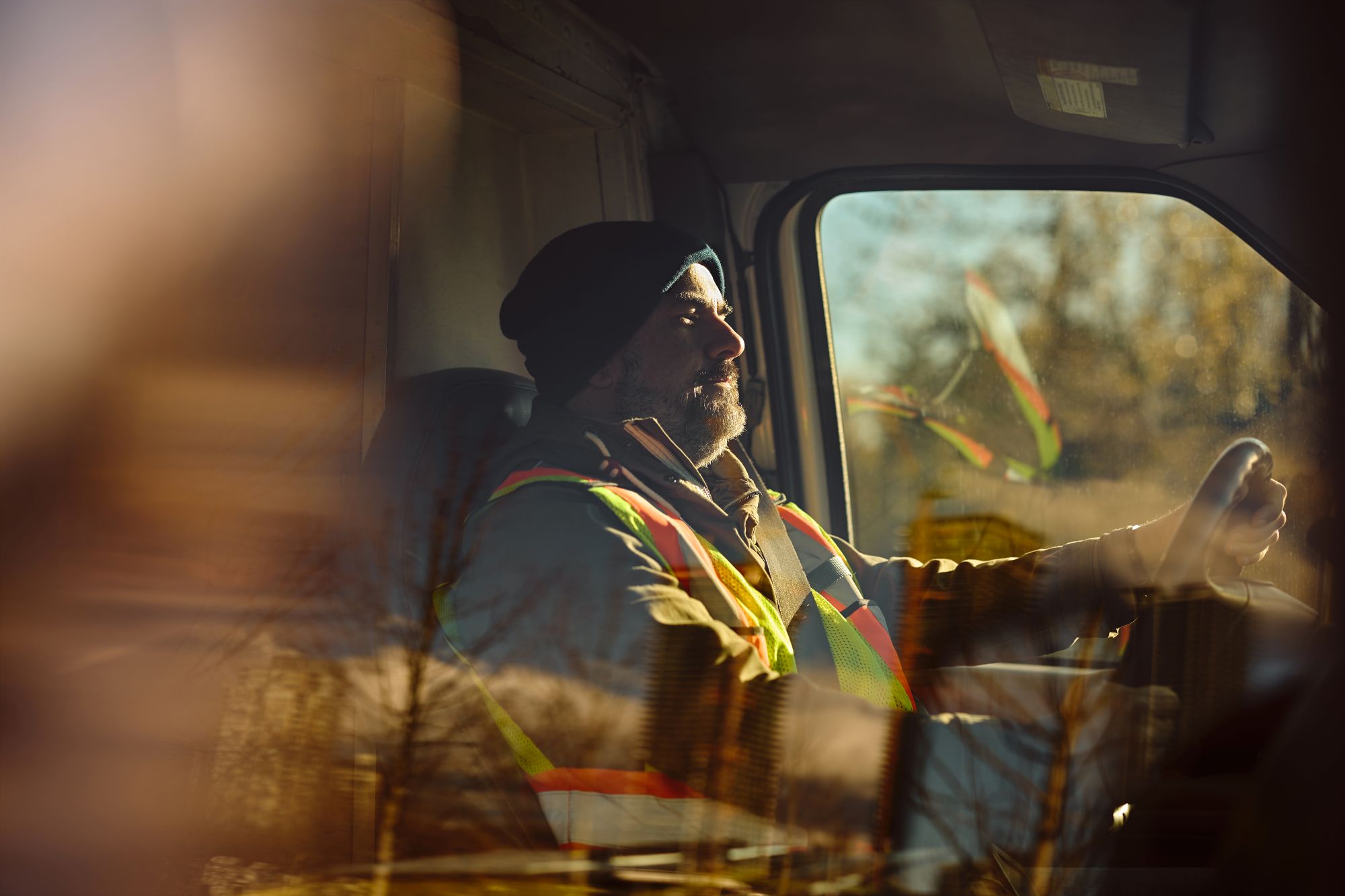
Guest
Razcvet infrastrukture v Romuniji - kaj to pomeni za sektor mobilnosti
Ustvarjeno: 22. 09. 2025
•
Posodobljeno: 22. 09. 2025
Romunija hitro postaja strateško logistično in tovorno vozlišče v jugovzhodni Evropi. Ob podpori milijardnih sredstev EU in nacionalnih sredstev infrastrukturni preporod države privablja upravljavce voznih parkov, vlagatelje v logistiko in proizvajalce. V tem članku raziskujemo, kaj ta razvoj pomeni za vozne parke, voznike in širši prometni sektor.
Romunska prometna infrastruktura je doživela velik premik v hitrosti in obsegu. Vlada je za cestne projekte do leta 2026 namenila približno 25 milijard lejev (4,27 milijarde funtov), kar kaže na doslej največjo osredotočenost na avtoceste in tovorne koridorje.
Sredi leta 2025 je bilo v Romuniji v uporabi približno 1 325 km avtocest (1 188 km avtocest in 138 km hitrih cest), še 741 km je bilo v gradnji, 669 km pa v fazi razpisa.
Romunija namerava do leta 2030 podvojiti svoje avtocestno omrežje, posodobiti strateške železniške proge, razširiti mestni promet in povezati regije, ki so bile dolgo izolirane. Izziv je ogromen, vendar bi lahko rezultat spremenil položaj države na evropskem prometnem zemljevidu.
Ključni projekti vključujejo severno-južno os A7 od Ploieștija do Sireta, ki bo pomagala pri prevozu do ukrajinske meje in bo dokončana do leta 2026. Drugi projekt je 11-kilometrska hitra cesta, ki bo povezovala Satu Mare z romunsko mejo z Madžarsko. Bukareška obvoznica A0 bo olajšala tovorni in potniški promet po prestolnici, južna polovica je že v uporabi. Druga pomembna dela vključujejo koridorja Suceava-Oar in Timișoara-Moravița ter 2,9 km dolg predor Meseș, ki bo postal najdaljši cestni predor v Romuniji.
"Ti koridorji ne bodo izboljšali le povezav med vzhodom in zahodom ter severom in jugom, temveč bodo povezali prej izolirane regije, kot sta Moldavija in severovzhod, s preostalo državo in EU," pravi Eduard Ularu, vodja poslovnega razvoja pri družbi SNAP.
Infrastruktura pa niso samo ceste. Most Brăila čez Donavo, ki bo odprt julija 2023 in bo stal 500 milijonov evrov (363 milijonov evrov bo sofinancirala EU), je prvi prehod čez morsko Donavo in bistveno izboljša povezanost s Konstanto in Dobrudžo.
Drugi pomembni dogodki vključujejo načrtovano nadgradnjo železnice v pristanišču Constanța in 130 milijonov evrov vredno širitev kontejnerskih in ro-ro zmogljivosti družbe DP World Romania, ki podvaja zmogljivost ter dodaja logistične povezave po cesti in železnici.
Zakaj je to pomembno
Romunski trg tovornega prometa in logistike je velik. [Leta 2025 bo znašal približno 21,11 milijarde USD (https://www.mordorintelligence.com/industry-reports/romania-freight-and-logistics-market), do leta 2030 pa naj bi se povečal na 24,27 milijarde USD. Medtem naj bi samo segment cestnega tovornega prometa leta 2025 znašal 9,07 milijarde USD, do leta 2030 pa naj bi se povzpel na 10,37 milijarde USD.
Te številke odražajo vse večjo vlogo Romunije kot vseevropskega koridorja, ki oskrbuje poti iz Madžarske, Bolgarije, Ukrajine, Moldavije in črnomorskih pristanišč. Ukrajina zdaj večino svojega izvoza žita usmerja prek Constanțe (https://breakbulk.news/romanias-government-approves-railroad-upgrades-for-constanta-port/) na črnomorski obali in namerava prek romunske infrastrukture podvojiti izvoz z 2 na 4 milijone ton na mesec.
"Te naložbe bodo Romuniji pomagale, da bo močneje konkurirala velikim logističnim središčem, kot sta Poljska in Grčija," pravi Eduard Ularu. "Konstanca ima velik potencial in s pravo infrastrukturo lahko končno postane vstopna točka za evropsko trgovino, ki naj bi bila."
Izboljšano skladiščenje, nižji stroški dela in trendi "friend-shoring" še dodatno spodbujajo proizvajalce in trgovce na drobno, da locirajo logistične centre v Romuniji, kar povečuje povpraševanje po cestah in spodbuja rast celotnega omrežja.

Digitalni razvoj
Nadgradnje infrastrukture niso le fizične, ampak tudi digitalne. Država širi svoje avtoceste in tovorne koridorje ter uvaja pametne sisteme za hitrejša, varnejša in učinkovitejša potovanja.
V celotnem omrežju so nameščena inteligentna orodja za spremljanje prometa, vključno s senzorji za tehtanje, induktivnimi prometnimi zankami in cestnimi kamerami. Ti sistemi se bodo v realnem času prenašali v centre za nadzor prometa v mestih, kot so Bukarešta, Brașov in Timișoara, ter tako pomagali organom in upravljavcem voznih parkov, da se hitreje odzovejo na incidente in zastoje.
Bukarešta prav tako nadgrajuje infrastrukturo semaforjev z uporabo umetne inteligence in pametnih detektorjev za optimizacijo pretoka vozil in zmanjšanje ozkih grl. To ima velike posledice za prevoznike tovornega prometa, ki se gibljejo po gostih mestnih območjih, izboljšuje zanesljivost potovalnega časa in zmanjšuje prosti tek.
Na nacionalni ravni Romunija prehaja na digitalno cestninjenje. Novi sistem TollRO, ki naj bi začel delovati leta 2026, bo sedanjo e-vinjeto nadomestil z modelom cestninjenja na podlagi prevožene razdalje, ki bo v skladu z direktivami EU upošteval emisije. Ta sprememba bi lahko spodbudila čistejše vozne parke in ponudila pravičnejše cene za logistične operaterje, ki vlagajo v vozila z nizkimi emisijami.
Za voznike to pomeni manj zamud, jasnejše informacije v realnem času in bolj odzivne razmere na cesti. Za upravljavce je to priložnost za načrtovanje voznega parka, upravljanje poti in trajnostne strategije.
Učinki za vozne parke in voznike
Modernizacija Romunije prinaša voznim parkom in voznikom koristi in kompromise. Morda je najpomembnejše to, da se bo izboljšala učinkovitost omrežja. Z bolj gladkimi potmi in hitrejšimi koridorji bodo naložbe verjetno zmanjšale potovalne čase in prosti tek. Nevarne enopasovne državne ceste bodo postopoma nadomestile varnejše in hitrejše avtoceste. S tem se bo povečala produktivnost in tudi skrajšal čas, ki ga vozniki preživijo za volanom.
Vendar pa ni vse pozitivno. Zaradi del, ki potekajo na avtocestah A7 in A8, lahko pride do zamud in sprememb poti med izvajanjem del. To lahko pomeni tudi večjo količino tovora (zlasti v Constanci in na mejnih prehodih), kar lahko obremeni obstoječo infrastrukturo.
"Trenutno gradbena območja, kot so DN2 in deli obvoznice A0 v Bukarešti, povzročajo obvoze in ozka grla," pojasnjuje Ularu. "Tovornjaki izgubljajo ure na poteh, ki bi morale trajati nekaj minut, kar vpliva na vse, od proračuna za gorivo do zanesljivosti dostave."
Poleg tega je treba zaradi novih koridorjev, strožjih varnostnih predpisov in spremenjenih pristojbin za uporabo cest posvetiti več pozornosti skladnosti.
Podpora dobremu počutju voznikov med prehodom
Kljub izboljšanju infrastrukture so varna parkirišča za počitek in objekti za dobro počutje na nekaterih tovornih koridorjih, zlasti v bližini mejnih območij in večjih vozlišč, še vedno pomanjkljivi. Na gradbenih območjih pogosto ni uradnih območij za odstavljanje, zato so vozniki izpostavljeni in nimajo kje počivati.
"Še vedno smo priča nevarnim postankom in prenatrpanim postajališčem na ključnih tovornih poteh," pravi Eduard. "Sodobne avtoceste bodo na vsakih 30-50 kilometrov prinesle posebna servisna in počivališča z bencinskimi črpalkami, trgovinami in okrepčevalnicami. Za voznike to pomeni varnejša mesta za parkiranje z ustrezno osvetlitvijo, nadzorom prek videonadzora in varnimi počivališči, ki zmanjšujejo tveganje kraje. Sanitarije, kot so tuši in čista stranišča - redkost na državnih cestah - bodo končno postale stalnica."
SNAP to vrzel odpravlja z interaktivnim zemljevidom parkirišč po vsej Romuniji. Vozniki lahko prek zemljevida SNAP zlahka poiščejo zanesljiva in varna parkirišča za tovornjake, vnaprej rezervirajo mesta, kjer so na voljo, in načrtujejo varnejše poti.
Načrtujete potovanje po Romuniji? Z zemljevidom SNAP poiščite varna in voznikom prijazna parkirišča ob ključnih tovornih poteh.
Trajnostni vidik
Ta proces posodobitve infrastrukture ima ključno vlogo tudi pri omogočanju okolju prijaznejše logistike. Z boljšim pretokom prometa se bodo zmanjšale emisije, ki jih povzročajo vozila v prostem teku in vožnja z ustavljanjem in speljevanjem.
Prav tako bodo nadgrajeni prometni koridorji za podporo nastajajoči infrastrukturi za polnjenje električnih vozil in vodika, kar bo zmanjšalo odvisnost od fosilnih goriv.
Regija v gibanju
Romunske naložbe v infrastrukturo pomenijo ključno spremembo za tovorni promet in mobilnost v jugovzhodni Evropi. Za vozne parke to pomeni hitrejše koridorje, večjo logistično zmogljivost in večji obseg trgovine, pa tudi natančnejši nadzor nad dobrim počutjem, skladnostjo in odpornostjo.
Družba SNAP kot vodilna družba v panogi, ki razmišlja o prihodnosti, zagovarja dobro obveščenost, prilagodljivo načrtovanje poti in orodja, usmerjena v voznike, ki podpirajo varnost in učinkovitost. Romunija se ne le posodablja, temveč tudi spreminja način prevoza blaga v regiji.
"Ne gre le za ceste, temveč za odpornost, trajnost in pametnejšo prihodnost tovornega prometa po vsej Evropi. Romunija je v središču tega premika," pravi Eduard.



